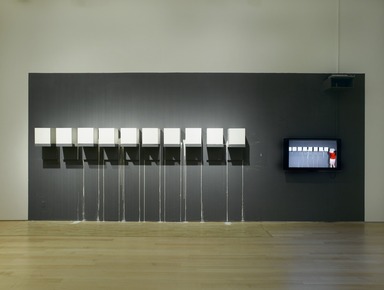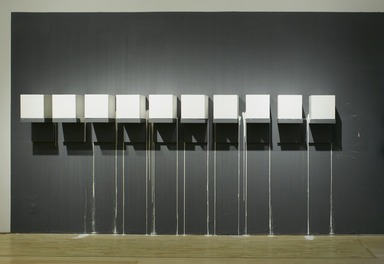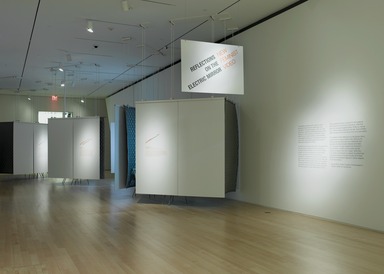

Reflections on the Electric Mirror: New Feminist Video, May 1, 2009 through January 10, 2010 (Image: DIG_E2009_Reflections_on_the_Electric_Mirror_01_PS2.jpg Brooklyn Museum photograph, 2009)
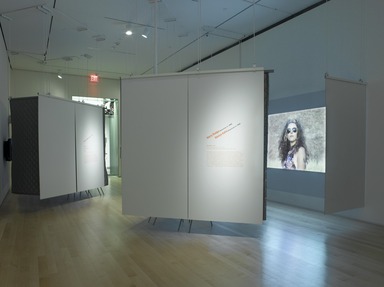
Reflections on the Electric Mirror: New Feminist Video, May 1, 2009 through January 10, 2010 (Image: DIG_E2009_Reflections_on_the_Electric_Mirror_02_PS2.jpg Brooklyn Museum photograph, 2009)

Reflections on the Electric Mirror: New Feminist Video, May 1, 2009 through January 10, 2010 (Image: DIG_E2009_Reflections_on_the_Electric_Mirror_03_PS2.jpg Brooklyn Museum photograph, 2009)
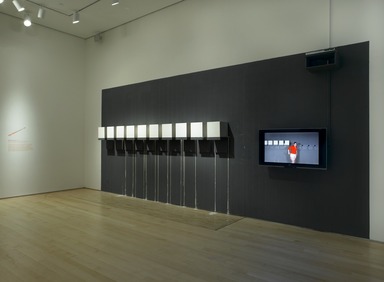
Reflections on the Electric Mirror: New Feminist Video, May 1, 2009 through January 10, 2010 (Image: DIG_E2009_Reflections_on_the_Electric_Mirror_04_PS2.jpg Brooklyn Museum photograph, 2009)
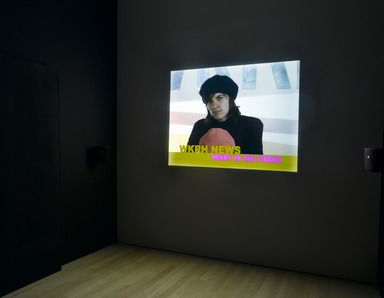
Reflections on the Electric Mirror: New Feminist Video, May 1, 2009 through January 10, 2010 (Image: DIG_E2009_Reflections_on_the_Electric_Mirror_05_PS2.jpg Brooklyn Museum photograph, 2009)
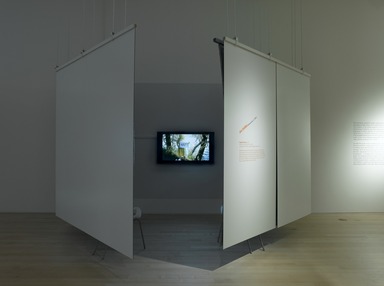
Reflections on the Electric Mirror: New Feminist Video, May 1, 2009 through January 10, 2010 (Image: DIG_E2009_Reflections_on_the_Electric_Mirror_06_PS2.jpg Brooklyn Museum photograph, 2009)
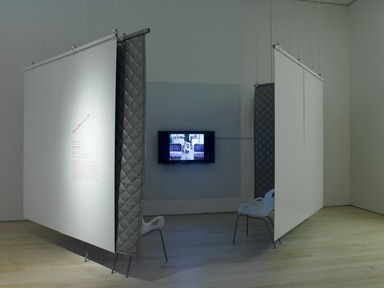
Reflections on the Electric Mirror: New Feminist Video, May 1, 2009 through January 10, 2010 (Image: DIG_E2009_Reflections_on_the_Electric_Mirror_07_PS2.jpg Brooklyn Museum photograph, 2009)

Reflections on the Electric Mirror: New Feminist Video, May 1, 2009 through January 10, 2010 (Image: DIG_E2009_Reflections_on_the_Electric_Mirror_08_PS2.jpg Brooklyn Museum photograph, 2009)
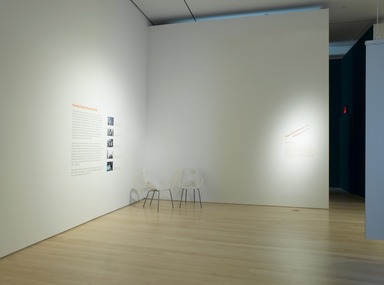
Reflections on the Electric Mirror: New Feminist Video, May 1, 2009 through January 10, 2010 (Image: DIG_E2009_Reflections_on_the_Electric_Mirror_09_PS2.jpg Brooklyn Museum photograph, 2009)
Reflections on the Electric Mirror: New Feminist Video
-
Reflections on the Electric Mirror
This exhibition presents recent videos by seven emerging female artists and collaborative duos. The majority of the artists appear in their own work, performing in relatively uncomplicated pieces with an emphasis on direct capture by a stationary camera rather than on complex narratives or special effects. This straightforward and low-tech approach ties their work to that of an influential generation of feminist video artists working in the 1970s.
As with the work of their predecessors, the approaches here are eclectic, ranging from humor and parody to intense personal revelation. Yet, common themes emerge, such as the appropriation of mass-media formats, especially the mimicking of television broadcasts—a strategy that is perhaps not surprising given the longstanding association between video and mass media. Another prevalent theme is the repetition of self-imposed tasks, recalling similar self-regulated and rhythmic actions embraced by feminist and other idea-based artists in the late 1960s and the 1970s. These repetitive motions, enacted for the audience, test the performer’s physical endurance, while their lack of an end goal suggests futility. Finally, by “acting out,” often in ways punishing to the self, many of these artists produce works that are at once funny and painful.
The exhibition’s title, Reflections on the Electric Mirror, is taken from an essay written in the 1970s by the feminist artist and filmmaker Lynn Hershman that examines the links between television and video art. The mirror is an apt metaphor for the work in this exhibition, in which women artists use the camera to capture their own images. While they may distance themselves as subjects by performing unexpected tasks or through role play, all of these artists are nevertheless engaging in various degrees of self-examination.
—Lauren Ross, Interim Curator of the Elizabeth A. Sackler Center for Feminist Art -
Feminist Video Art of the 1970s
Video-recording equipment was commonly used for television production during the 1960s, but its availability to the public was extremely limited. Later in the decade, the “PortaPak” was introduced—a relatively lightweight and portable video camera with a playback device—and the age of do-it-yourself video was born. Artists quickly adopted video as a means for personal expression and political activism. Female artists took up the new technology at the same rate as their male counterparts, arguably making video the first artistic medium to be pioneered equally by both genders.
Feminists embraced video as a tool to explicitly explore issues relating to their own bodies, experiences, and identities. By performing (often alone) in front of a stationary camera, these artists isolated and emphasized their own images in order to express their desires, frustrations, and political views. Many felt a sense of urgency about retaining authority over their own representation in an art world that often viewed women as models and muses rather than creators.
There were many women artists who pioneered video art in the 1970s. The images on this panel represent a sample of the work produced during that era.
-
April 1, 2009
Reflections on the Electric Mirror: New Feminist Video presents recent videos by a new generation of feminist video artists. This exhibition will be on view in the Elizabeth A. Sackler Center for Feminist Art at the Brooklyn Museum, May 1, 2009 through January 10, 2010.
When video emerged as a new medium in the early 1970s, female artists quickly adopted its use, making it arguably the first medium to which men and women had equal access. Feminists in particular embraced it as a forum to explore issues related to their own bodies, experiences, and identities. The rather straightforward capture of the artist performing (usually alone) in front of a stationary camera served as an avenue to investigate desire, autonomy, and selfhood. Pioneers of the medium included Dara Birnbaum, VALIE EXPORT, Martha Rosler, and Hannah Wilke.
Like many of their 1970s precursors, the seven up-and-coming video artists in this exhibition place greater emphasis on their performances for the camera than on complex narratives or special effects. Their videos explore a variety of themes ranging from humor and parody to intense revelation. A few of the highlights are: Commercials, 2002, by Shannon Plumb; Black Out, 2004, by Cathy Begien; and Whacker, 2005, by Harry Dodge and Stanya Kahn.
Plumb embraces slapstick comedy in Commercials; in which she captures the humor and complexity of everyday life through mock TV commercials. Black Out, a darkly funny and intense video, shows Begien reenacting an evening of partying and overindulgence. In the video Whacker, Kahn, dressed in a halter dress, heels, and sunglasses, uses a weed whacker to mow an overgrown lot. Through Kahn’s deadpan delivery, Whacker not only plays with gender stereotypes by having a glamorously dressed woman doing yard work, but also suggests the transformative power of meditative labor.
For the exhibition, Kate Gilmore will create a new, site-specific artwork in the Elizabeth A. Sackler Center for Feminist Art. This new video installation will capture Gilmore testing her physical endurance by repeatedly moving heavy plaster cubes onto paint-covered shelves installed in the gallery. When the plaster cubes are placed on the shelves the paint will splatter and drip to the floor creating a visceral impression related to her physical labor. Visitors will be able to view documentation of the performance in the video as well as observe the physical remnants left in the gallery.
The exhibition title Reflections on the Electric Mirror is taken from an eponymous essay written in the 1970s by artist/filmmaker Lynn Hershman, examining the links between television and video art. The evocation of the mirror is an apt metaphor for work in which artists use their own images for various types of subjectivity and self-analysis, ranging from role playing to autobiography.
Early feminist videos from the 1970s will be screened in the Forum of the Elizabeth A. Sackler Center through the month of May. More information will be available on the Brooklyn Museum Web site: www.brooklynmuseum.org.
This exhibition is organized by Lauren Ross, Interim Curator of the Elizabeth A. Sackler Center for Feminist Art, Brooklyn Museum.
Press Area of Website
View Original
